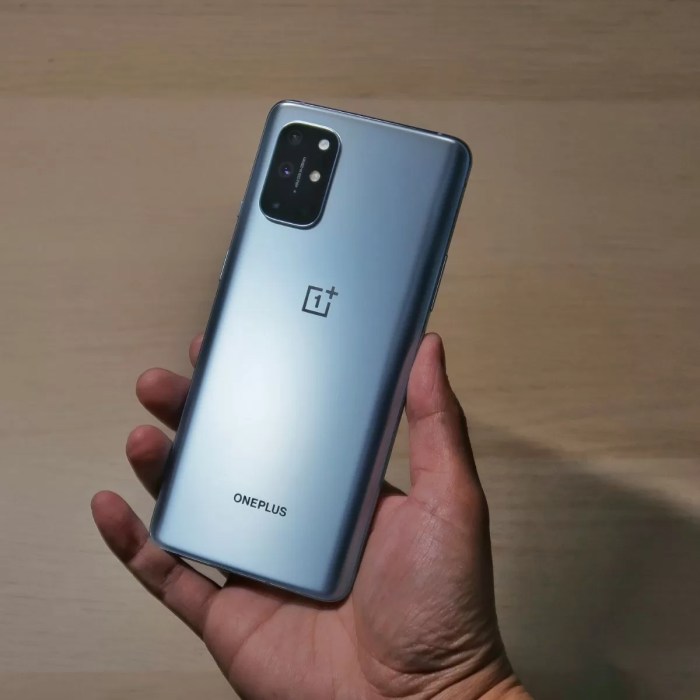Project Treble: A Game Changer for Android Updates
Project Treble is a significant advancement in Android that revolutionizes how Android devices receive software updates. It separates the Android operating system (OS) from the device’s hardware, making it easier and faster for manufacturers to deliver updates to their devices.
The Benefits of Project Treble
Project Treble offers several advantages for Android users and manufacturers alike:
- Faster Updates: With Treble, manufacturers can focus on updating the Android OS without needing to modify the device’s hardware drivers. This streamlined process allows for faster update rollouts, ensuring users get the latest features and security patches more quickly.
- Longer Update Support: By simplifying the update process, manufacturers can provide longer update support for their devices. This means users can enjoy software updates for a longer period, extending the lifespan of their devices and reducing the need for frequent upgrades.
- Improved Security: Treble facilitates quicker security patch deployments, allowing manufacturers to address vulnerabilities and protect users from potential threats more efficiently. This enhances the overall security of Android devices.
- More Innovation: With Treble, developers can focus on creating innovative features and functionalities for Android, knowing that their applications will be compatible with a wider range of devices. This fosters a more vibrant and dynamic Android ecosystem.
The History of Project Treble
Project Treble was introduced with Android Oreo (version 8.0) in 2017. Before Treble, updating Android devices was a complex and time-consuming process for manufacturers. Each device required extensive customization and modifications to ensure compatibility with the new OS. This often resulted in delays and inconsistent update availability across different devices.
The Impact of Project Treble
Project Treble has significantly impacted the Android landscape, addressing the long-standing issue of fragmentation. Before Treble, Android updates were fragmented across different manufacturers and devices, leading to inconsistencies in features, security patches, and overall user experience.
- Reduced Fragmentation: Treble has helped reduce fragmentation by enabling manufacturers to update devices more efficiently. This has led to a more unified Android experience across different devices, with users enjoying similar features and functionalities.
- Enhanced User Experience: Faster and more frequent updates mean users can enjoy the latest features and improvements, leading to a smoother and more enjoyable user experience. This also translates to better device performance and security.
- Increased Innovation: With Treble, developers can focus on creating innovative apps and services that are compatible with a wider range of devices, fostering a more vibrant and dynamic Android ecosystem. This leads to more choices and options for users, enriching their overall experience.
OnePlus and Project Treble
OnePlus, a popular smartphone manufacturer, has opted not to fully embrace Project Treble, Google’s initiative designed to streamline Android updates. This decision has sparked debate among Android enthusiasts and users alike.
Reasons for OnePlus’s Stance, Oneplus not supporting project treble
OnePlus’s decision to not fully implement Project Treble stems from a combination of factors, including their own software optimization strategies and a desire to maintain a distinct user experience.
- OnePlus prioritizes delivering a unique and optimized user experience with its OxygenOS skin, which integrates tightly with the underlying hardware. Implementing Project Treble could potentially introduce complexities and limitations that could hinder their ability to achieve this.
- OnePlus has historically been known for its rapid software update cycles, often exceeding the update cadence of other Android manufacturers. They may believe that their existing update process, even without full Project Treble support, is efficient enough to meet their update goals.
Potential Benefits and Drawbacks
OnePlus’s approach to software updates, while not fully leveraging Project Treble, has its own set of potential benefits and drawbacks.
- Benefits: OnePlus’s tight integration of hardware and software allows them to offer features and optimizations that might not be possible with a more generic Android implementation. They can also maintain a consistent user experience across different generations of devices, which is important for brand recognition and user satisfaction.
- Drawbacks: The lack of full Project Treble support might limit the speed and ease of Android updates. In addition, it could potentially hinder OnePlus’s ability to support older devices for extended periods, as updating older hardware to newer Android versions could be more challenging without the benefits of Project Treble.
Impact on OnePlus Users
The lack of Project Treble support on OnePlus devices presents a significant challenge for users who value timely software updates and a smooth user experience. While OnePlus has historically been praised for its fast update cycles, the absence of Project Treble introduces complexities and limitations that can hinder the update process.
Software Update Delays
The absence of Project Treble directly impacts the speed and frequency of software updates for OnePlus devices. Unlike devices with Project Treble, where updates can be delivered faster by leveraging a modular system, OnePlus devices require a more extensive and time-consuming process. This means OnePlus users may experience longer waiting times for new features, security patches, and bug fixes.
- For example, the OnePlus 7T series received the Android 11 update in November 2020, while devices like the Pixel 4, which support Project Treble, received the update in September 2020. This highlights the potential delay in receiving updates on OnePlus devices due to the lack of Project Treble.
Limited Update Support
The lack of Project Treble also limits the number of updates a OnePlus device may receive. As the software stack becomes increasingly complex, updating older devices without Project Treble can become a logistical challenge for OnePlus. This can result in older OnePlus devices receiving fewer updates, potentially leaving them vulnerable to security threats and lacking the latest features.
- For instance, the OnePlus 5T, which was released in 2017, received its final major Android update with Android 10 in 2020. While this is a commendable update cycle, it’s worth noting that devices with Project Treble often receive longer support, with some devices even receiving updates beyond their initial warranty period.
Inconsistent Update Experience
The update experience for OnePlus users can be inconsistent due to the lack of Project Treble. While some devices might receive updates relatively quickly, others may experience significant delays. This inconsistency can be frustrating for users who want to enjoy a consistent and predictable update experience.
- For instance, the OnePlus 8 series received the Android 11 update in December 2020, while the OnePlus 8T received the update in January 2021. This difference in update timing, even for devices within the same product line, can be attributed to the lack of Project Treble, which can introduce variations in the update process.
Alternatives and Solutions: Oneplus Not Supporting Project Treble
While OnePlus not supporting Project Treble is a bummer for users wanting the latest Android updates, there are still ways to get those sweet software upgrades. These methods might not be as seamless as a simple OTA update, but they offer alternatives to keep your OnePlus device running smoothly.
Alternative Update Methods
The lack of Project Treble doesn’t necessarily mean you’re stuck with the same old Android version forever. Here are some potential workarounds and solutions for OnePlus users seeking updates:
- Custom ROMs: This is a popular choice among tech-savvy users. Custom ROMs are modified versions of Android that can be installed on your OnePlus device. They often offer the latest Android version, along with various customization options. Popular custom ROMs include LineageOS, Paranoid Android, and Resurrection Remix. However, flashing a custom ROM can be a complex process that requires some technical knowledge and carries the risk of bricking your device if not done correctly.
- Official OnePlus Updates: While OnePlus might not be releasing official updates as frequently as other brands, they still offer software updates for their devices. You can check for updates through the Settings app on your OnePlus device. Keep in mind that these updates may not always be the latest Android version, but they often include bug fixes and security patches.
- Unofficial Updates: Sometimes, developers in the Android community create unofficial updates for OnePlus devices. These updates may not be as stable as official updates, but they can provide a way to get the latest Android version. However, it’s important to be cautious when installing unofficial updates, as they may not be fully tested and could potentially cause issues with your device.
Comparing Update Methods
| Method | Advantages | Disadvantages |
|---|---|---|
| Custom ROMs | Latest Android version, customization options | Technical knowledge required, risk of bricking the device, potential instability |
| Official OnePlus Updates | Stable and reliable, security patches | May not be the latest Android version, infrequent updates |
| Unofficial Updates | Potentially the latest Android version | Unstable, untested, risk of issues |
Resources and Communities
If you’re looking for more information or support regarding updating your OnePlus device, there are several resources and communities available:
- OnePlus Forums: The official OnePlus forums are a great place to connect with other OnePlus users and find information about updates and troubleshooting.
- XDA Developers: XDA Developers is a popular online community for Android enthusiasts. You can find discussions about OnePlus devices, custom ROMs, and other related topics.
- Reddit: There are several subreddits dedicated to OnePlus devices, where you can find information and support from other users.
Future Prospects
While OnePlus’s current stance on Project Treble might seem rigid, it’s not impossible to envision a future where they embrace this vital update framework. The company’s strategic decisions are influenced by various factors, including market trends, user demands, and their own internal development priorities.
Factors Influencing Future Adoption
OnePlus’s decision to adopt Project Treble will be driven by a combination of factors, including:
- User Pressure: As more users become aware of the benefits of Project Treble, the demand for faster and more frequent updates could increase. OnePlus will likely pay attention to this growing sentiment, especially from its loyal fanbase known for its tech-savvy nature.
- Competitive Landscape: The smartphone market is fiercely competitive. If OnePlus’s competitors start offering devices with faster and more frequent updates thanks to Project Treble, OnePlus might feel pressured to follow suit to remain competitive. For example, Google’s Pixel phones, known for their timely updates, have set a benchmark for other manufacturers.
- Android Development: Google’s continuous efforts to improve Android’s update process, including enhancements to Project Treble, could incentivize OnePlus to reconsider its position. If future Android versions become more reliant on Project Treble for efficient updates, OnePlus might have no choice but to adopt it.
Oneplus not supporting project treble – The lack of Project Treble support on OnePlus devices presents a mixed bag for users. While OnePlus has been known for delivering relatively quick updates, the absence of this crucial Android feature raises concerns about the long-term sustainability of their update strategy. As the Android landscape evolves and competition intensifies, OnePlus’s decision to forgo Project Treble may impact their ability to keep up with the latest software advancements and provide a seamless user experience. Ultimately, the future of software updates for OnePlus devices remains to be seen, but the lack of Project Treble support adds a layer of uncertainty and raises questions about the company’s commitment to long-term user satisfaction.
OnePlus’s stubborn refusal to adopt Project Treble is a head-scratcher. It’s like they’re saying, “We know our phones could be updated faster, but we’d rather stick to our own way of doing things.” This stubbornness is a bit like the advice in this article about T-Mobile users not upgrading to iOS 10 , where the author suggests holding onto older software for a smoother experience.
In the end, it’s all about prioritizing user experience, and OnePlus needs to realize that a faster update process is a major win for everyone.
 Standi Techno News
Standi Techno News

